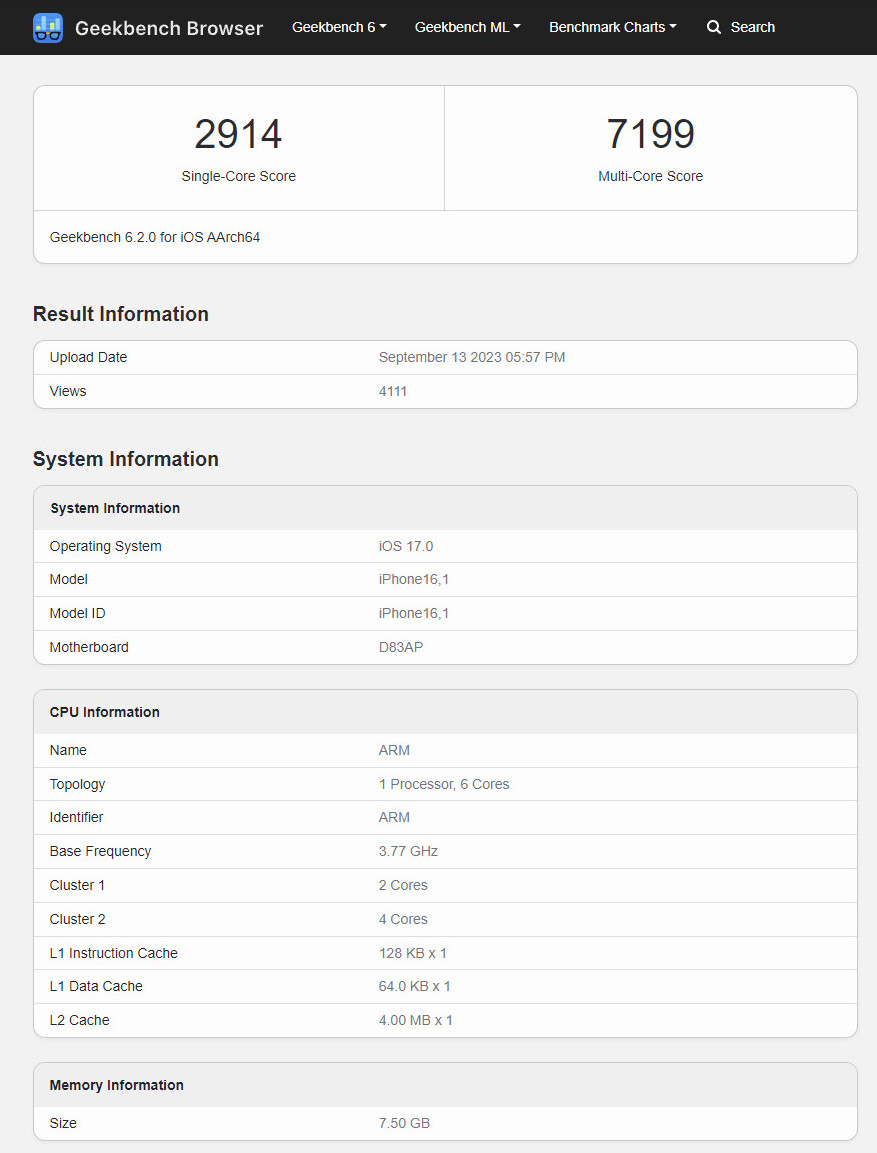An Apple “iPhone16,1” was put through the Geekbench 6.2 gauntlet earlier this week—according to database info this pre-release sample was running a build of iOS 17.0 (currently in preview) and its logic board goes under the “D83AP” moniker. It is interesting to see a 16-series unit hitting the test phase only a day after the unveiling of Apple’s iPhone 15 Pro and Max models—the freshly benched candidate seems to house an A17 Pro SoC as well. The American tech giant has set lofty goals for said flagship chip, since it is “the industry’s first 3-nanometer chip. Continuing Apple’s leadership in smartphone silicon, A17 Pro brings improvements to the entire chip, including the biggest GPU redesign in Apple’s history. The new CPU is up to 10 percent faster with microarchitectural and design improvements, and the Neural Engine is now up to 2x faster.”



When I see someone mentioning geekbench multicore score, I just roll my eyes. Compare to other multicore benchmarks like Cinebench, Blender and most gaming bench they are way off in terms of real life performance. It looks like they bench for multicore for separate threads. You know one thread/job for one core and not one job for more than one core. This is great for mobile devices because this shared processing/tasks is a huge power draw so when it is possible using single core for processing/tasks is a huge power saver. I looks to me Geekbench always favored mobile devices and going to stay that way.